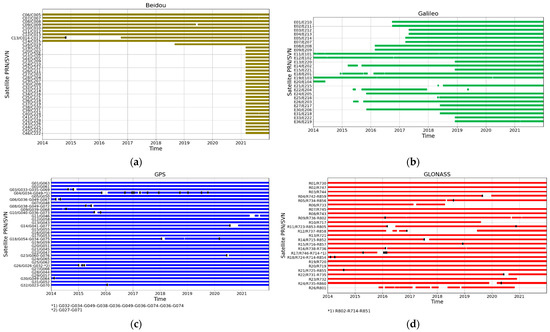Topical Advisory Panel Members’ Collection Series: Sensors Technologies for Intelligent Transportation Systems
A topical collection in Sensors (ISSN 1424-8220). This collection belongs to the section "Vehicular Sensing".
Viewed by 1072Editors
Interests: social computing; intelligent transportation systems; human behavior dynamics; intelligent vehicles; block-chain
Interests: connected and automated traffic flow; transportation systems for road and air traffics
Special Issues, Collections and Topics in MDPI journals
Interests: air traffic surveillance; satellite systems; telecommunication; road traffic management; ITS
Special Issues, Collections and Topics in MDPI journals
Topical Collection Information
Dear Colleagues,
We are pleased to announce that the Topical Advisory Panel Members (TAPMs) of the Vehicular Sensing section are now compiling a collection of works that will bring together the latest scientific achievements in advanced sensing technologies in Intelligent Transportation Systems (ITSs). The technologies of Intelligent Transportation Systems and Intelligent Connected Vehicles can be applied to communications, computers, sensors, automatic control theory, and artificial intelligence, including the Internet of Vehicles and the Cooperative Vehicle Infrastructure System, smart cars, intelligent transportation, and mobile technology.
The purpose of this Special Issue is to publish a set of the best insightful and influential original articles or reviews discussing key topics in this field. We expect these papers to be widely read and highly influential within the field.
We would also like to take this opportunity to call on more scholars to join the collection on Vehicular Sensing so that we can further develop this exciting field of research. Potential topics include, but are not limited to, the following:
- Intelligent and connected vehicles, connected and automated vehicles;
- Internet of vehicles;
- Autonomous and connected vehicles;
- Smart grid and V2G;
- Cooperative vehicle infrastructure system;
- Traffic control and management;
- Navigation and localization;
- Big data and AI applications in ITSs;
- Traffic control and traffic load management;
- LiDAR and 3D sensors technologies, Bird’s-eye view perception;
- Air, road, rail, and waterway transportation networks and systems;
- Urban air mobility, and highly automated aircraft;
- Advanced driver assistance systems (ADASs);
- Interconnected vehicles and transportation systems;
- Transportation networks and systems;
- Autonomous and semi-autonomous intersection, and autonomous traffic signal control;
- Sensors, detectors, and actuators;
- Advanced connectivity and communication, 5G, 6G, and cooperative perception, edge computing;
- Smart mobility and sustainable transport services;
- Sensors fusion;
- Computer vision;
- Connected vehicles on urban roads;
- Vehicle localization system.
Dr. Xiao Wang
Dr. Jiangchen Li
Dr. Karolina Krzykowska-Piotrowska
Guest Editors
Manuscript Submission Information
Manuscripts should be submitted online at www.mdpi.com by registering and logging in to this website. Once you are registered, click here to go to the submission form. Manuscripts can be submitted until the deadline. All submissions that pass pre-check are peer-reviewed. Accepted papers will be published continuously in the journal (as soon as accepted) and will be listed together on the collection website. Research articles, review articles as well as short communications are invited. For planned papers, a title and short abstract (about 100 words) can be sent to the Editorial Office for announcement on this website.
Submitted manuscripts should not have been published previously, nor be under consideration for publication elsewhere (except conference proceedings papers). All manuscripts are thoroughly refereed through a single-blind peer-review process. A guide for authors and other relevant information for submission of manuscripts is available on the Instructions for Authors page. Sensors is an international peer-reviewed open access semimonthly journal published by MDPI.
Please visit the Instructions for Authors page before submitting a manuscript. The Article Processing Charge (APC) for publication in this open access journal is 2600 CHF (Swiss Francs). Submitted papers should be well formatted and use good English. Authors may use MDPI's English editing service prior to publication or during author revisions.








